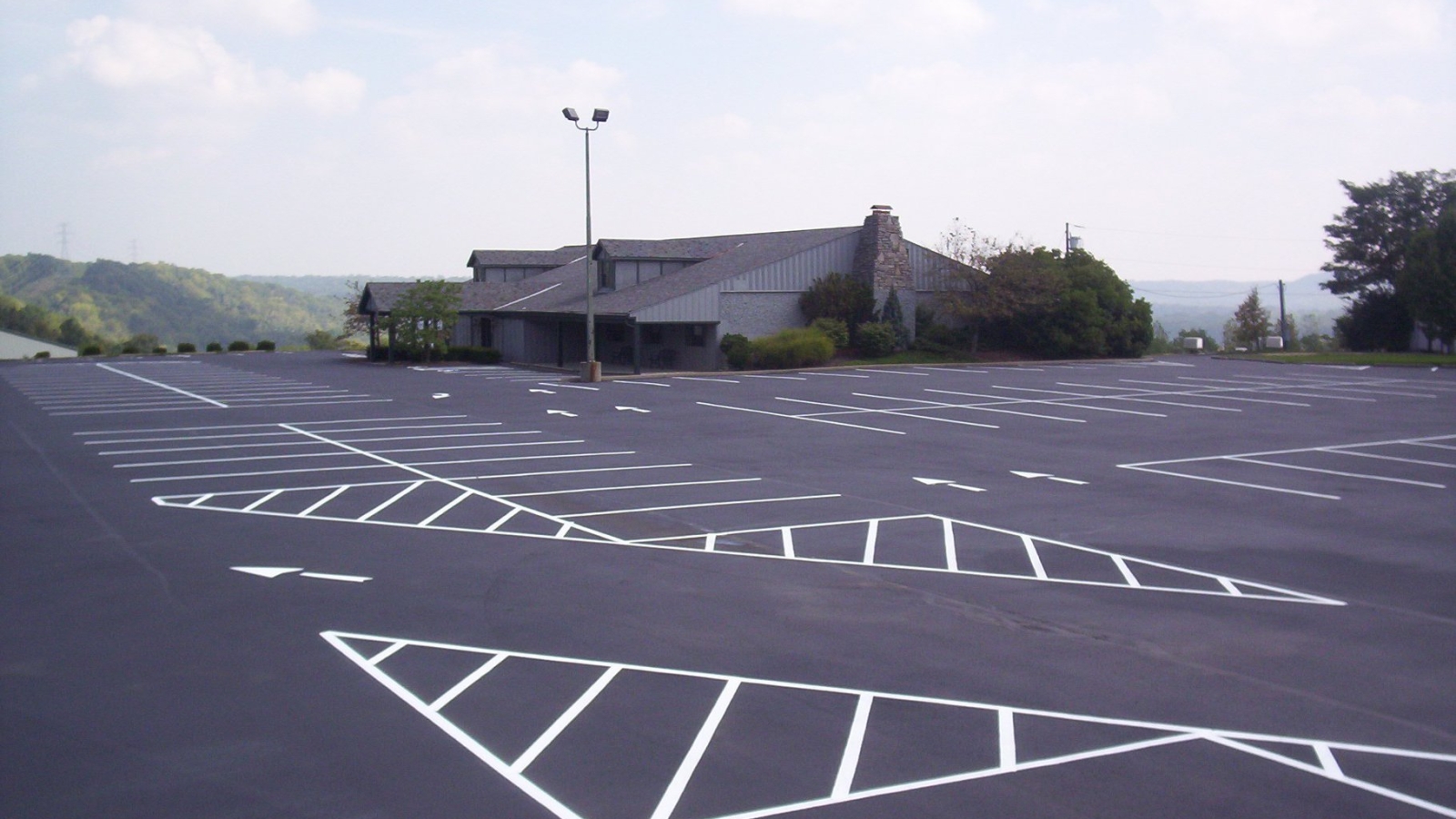All You Need To Know About SealCoating
What exactly is sealcoating
Asphalt sealcoating is a similar process to painting a house. The asphalt pavement on a driveway, sidewalk or parking lot can deteriorate due to exposure to the sun, heavy traffic or oil spills. The sealcoating process involves a spray system applying an asphalt or coal-tar emulsion to help protect the asphalt from the elements. As a result, properties will look more attractive and thriving to customers and visitors.
What sealcoating is not
The important thing to remember about sealcoating is that it is a cosmetic process and it is NOT a structural repair, nor a crack filler. If your property requires any patching, crack sealing or other asphalt repair services, these must be done before the sealcoating takes place.
How often should I sealcoat my personal property?
We do not believe in sealcoating a surface too often unless it gets a lot of traffic or exposure to the weather. Therefore, a property should be sealcoated every 3 to 4 years or when it starts to look ‘dry’.
My property has a lot of driveway cracks, will you crack fill these?
As part of the production process, we will use a cold pour crack-fill to fill significant cracks with our special sealcoating equipment. We define “significant” as cracks of roughly ½” or wider. Generally, if the asphalt has extensive ‘alligatoring’, you will still be able to see the random cracks through the sealcoat.
What will the finished product look like?
Sealcoating gives your property a uniformly black color, which will make your property look better. When you examine the surface, however, you will still be able to see areas that have been crack-filled or patched due to the different texture of the repaired asphalt. Worn asphalt that has been previously sealcoated has a much smoother appearance than the new asphalt that is just sealcoated for the first time.
¿Do you have any suggestions for making the production process run smoother?
Yes. Please make sure to cut off your lawn sprinkler system. While we will barricade the areas that have been sealcoated already, you should also advise your lawn service and trash pick-up to stay OFF of the surface for at least two or three days to prevent scuffing.
When can I drive on my newly sealcoated surface
Every situation varies due to the weather, but as a rule of thumb you should not drive on the sealcoated surface for at least 2 to 3 days to allow the sealcoating process to properly cure so that it doesn’t track onto adjoining areas or scuff. Rainy days can cause the product to take even longer to cure.
Are there any adverse effects to applying sealcoating too often?
To draw on the painting analogy again, if you contract a driveway sealcoating service every year (or every other year), unless the property gets a lot of traffic, the sealcoating will build up. The biggest drawback we find is that the surface gets extremely slick when it rains. On a property with a hill or on a steep incline, this can be a major consideration.
Seal-coating Weather & Drying Time.
The all time favorite question: When you are sealing your driveway, how long does it take to dry?
As mentioned above, the rule of thumb is to stay off of the surface for at least 2 or 3 days.
Weather Conditions:
-
The pavement temperature should be at least 50F° (10C°) and the air temperature should be 50F° (10C°) and rising. Otherwise, the sealer should not be applied.
-
Do not apply the sealer on a rainy day, during wet weather, or when rain is anticipated within eight hours after application is completed.
-
The sealer should not be applied to hot surfaces under the summer sun (over 90F°, ambient) without first cooling the surface with clean water. Water should dampen the surface without leaving puddles.
-
Since an emulsion may be damaged by freezing, it should be protected at all times when the temperature drops below 40F° (4C°).
Drying Time:
The final coat must be allowed to dry a minimum of eight hours of good daylight drying conditions before opening to traffic, and initially cure enough to drive over without damaging the sealcoating.
If marginal weather conditions exist during this eight hour drying time, additional time will be required. In some cases this could exceed 24 hours.
As a recommendation, make sure to check the condition of the surface before driving on it.

